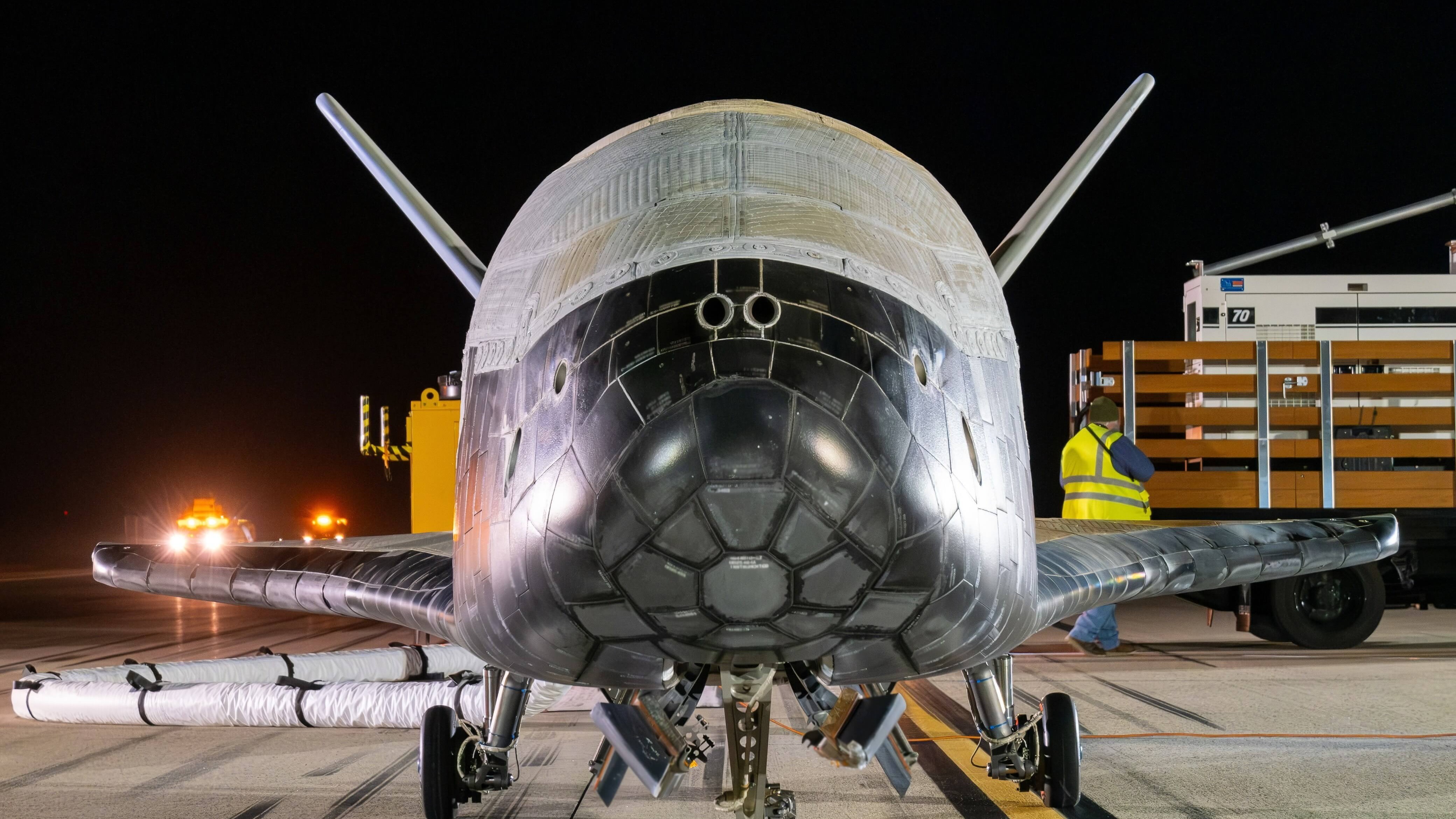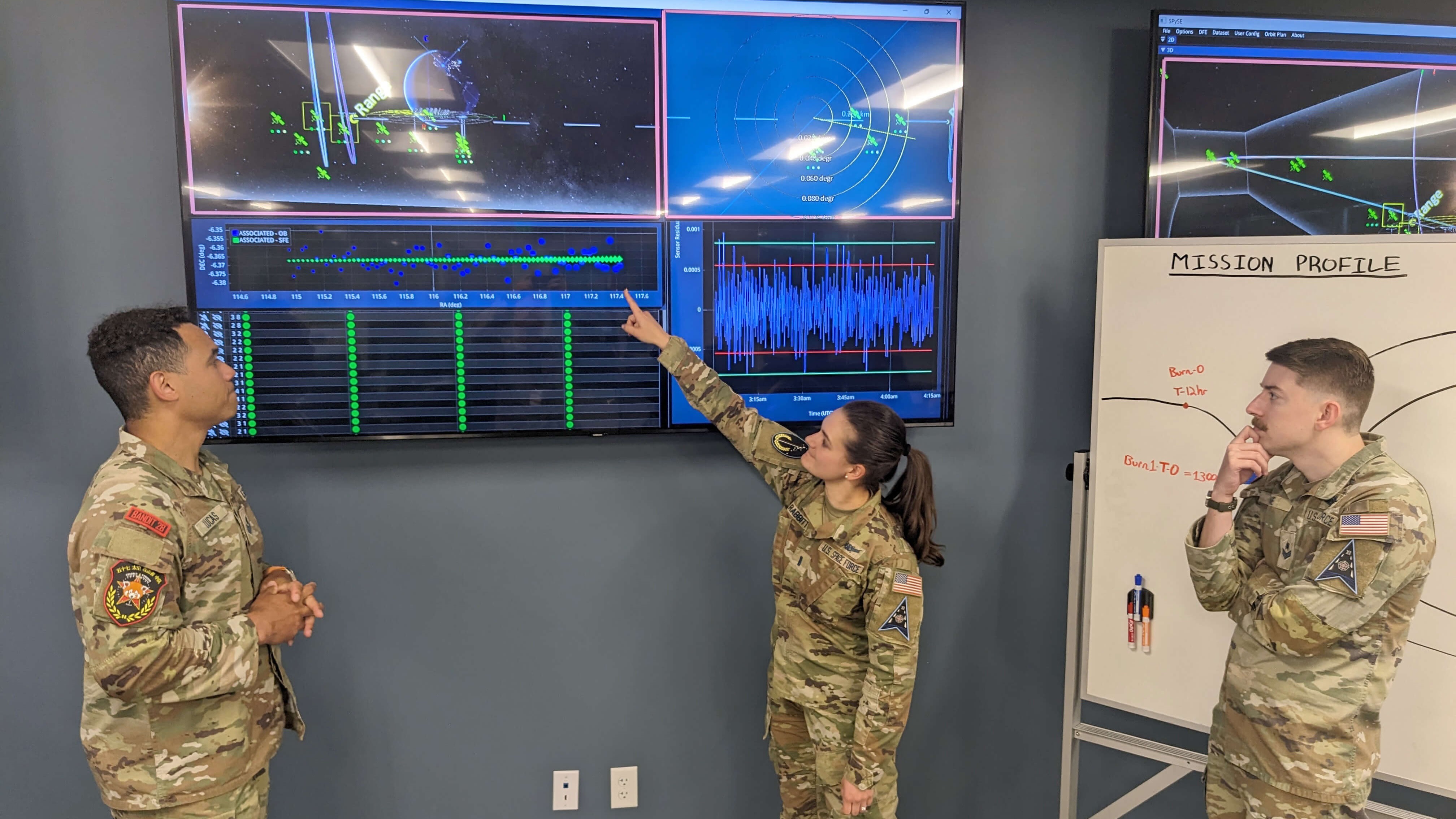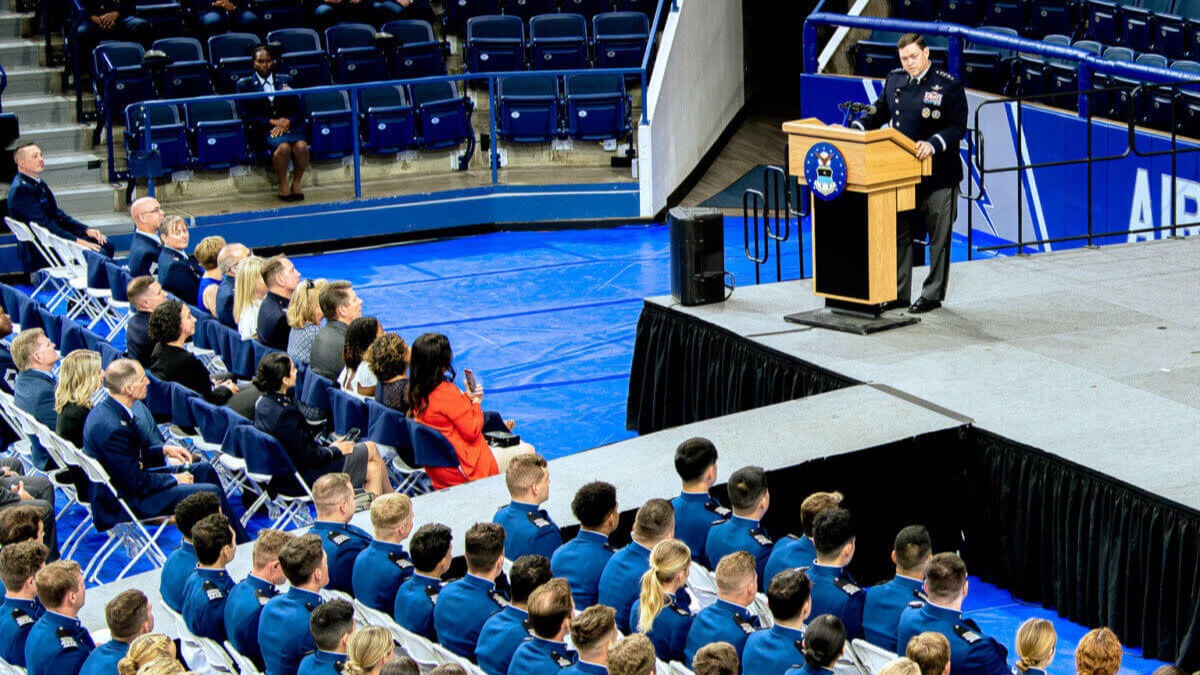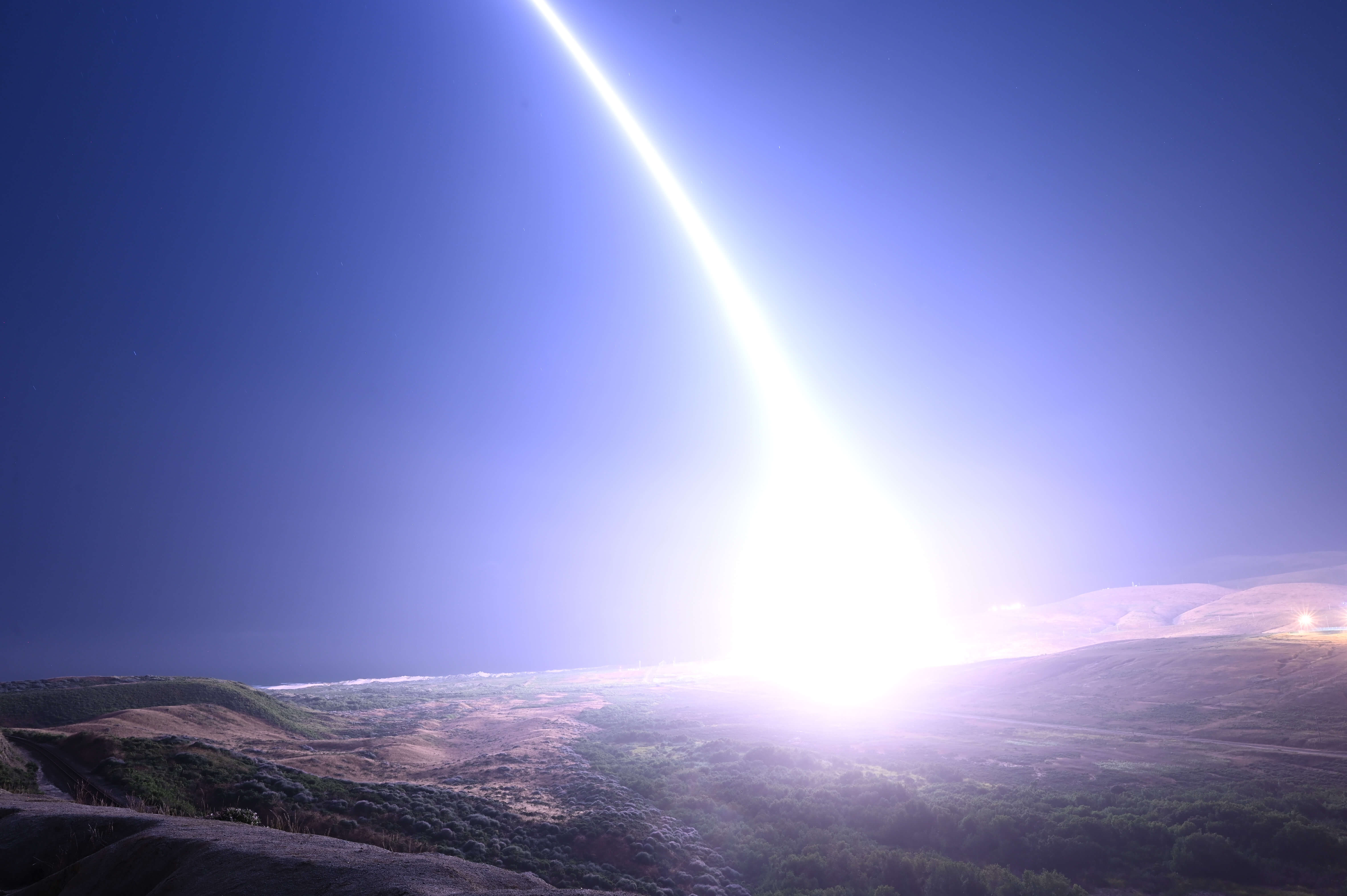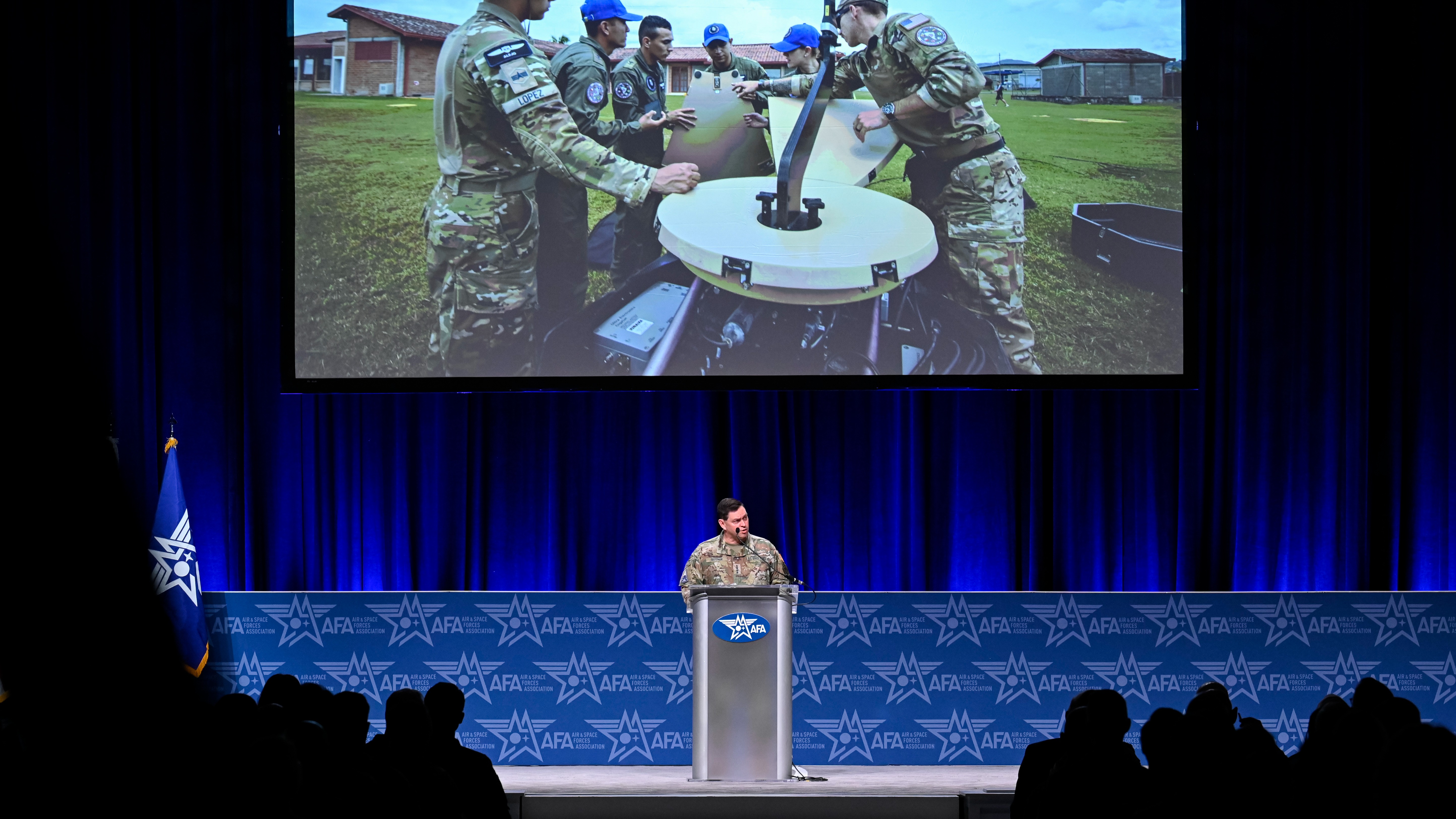
0 min read
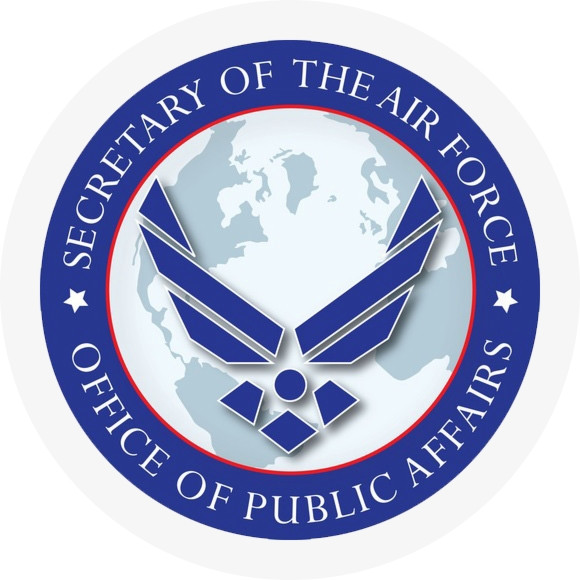
Air Force
Secretary of Public Affairs
Saltzman outlines plan to reoptimize Space Force for Great Power Competition
AURORA, Colo. (AFNS) -- Chief of Space Operations Gen. Chance Saltzman spoke to Air & Space Forces Association Warfare Symposium attendees Feb. 13 about how the U.S. Space Force will reoptimize to meet today’s security challenges.
On Feb. 12, the Department of the Air Force announced 24 key decisions to be implemented across the Space Force and Air Force to reoptimize for Great Power Competition. Saltzman added detail and context for why the Space Force-specific decisions are necessary for the service, and how they will affect the nation’s youngest and smallest military service.
“I’m extremely proud of the Space Force and all the good it has accomplished,” he said. “But, as good as we are, as much as we’ve done, as far as we’ve come, it’s not enough. We are not yet optimized for Great Power Competition.”
To address that, Saltzman said the Space Force is refining the way it trains officers and has won permission from Congress to establish a novel personnel management system that provides flexibility and efficiencies that will help the service attract and retain the highly specialized skills it desperately needs. It has created a “Futures Command” to gauge the future and mesh that future with the current force more precisely.
Additionally, he said the service will “reorient” its focus from primarily supplying services that combatant commanders in all domains must have to defining “our readiness by our ability to deter and defeat rival powers.”
“These are substantial organizational, training, and equipping challenges,” he said, adding, “Improved readiness will help us better orient Space Force toward the high-end fight and ensure our Guardians can win the contested space domain.”
The reasons behind these shifts are clear, he said.
“Today, the space race that started in the 1950s, has evolved into the immensely more complex Great Power Competition in space that we are engaged in now. The United Force Space Force was established to meet these challenges.”
There are four pillars in the Department of the Air Force’s effort to reoptimize for Great Power Competition: Develop People, Generate Readiness, Project Power and Develop Capabilities.
Saltzman highlighted that because the Space Force was established less than five years ago, the distance the service must travel to reoptimize is necessary, but manageable, because many of the ideas that had already taken root to build a purpose-built Space Force.
He told an audience of several thousand Guardians, Airmen, senior leaders and industry officials that the high profile reoptimization for the whole department, announced a day earlier by Air Force Secretary Frank Kendall, dovetails with much of the existing structure Space Force already has in place.
“The Space Force has brought a level of clarity and focus to operations in, to, and from space that the Department of Defense did not have before its establishment in 2019,” Saltzman said. “This lean, operations-focused service dedicated to space deliberately stood up only five career fields – intelligence, cyber space, space operations, developmental engineering, and program management.”
To meet the demands of the department’s focus on developing capabilities, the Space Force will create a new field command called Space Futures Command to meet the forward-looking planning requirements that ensure competitiveness over time. It will forecast the threat environment, develop, and validate concepts, conduct experimentation and wargames, and perform mission area design.
To achieve the department’s “second pillar” focusing on developing people, Saltzman said the goal is to create joint-minded warfighters who understand the battlefield context of the space domain and who are fully equipped to act within it.
The Space Force will redesign career paths to produce Guardians that meet its high-tech operational demands. It will also establish a common Officer Training Course for new accessions and expand educational and developmental opportunities for all Guardians – enlisted, officer and civilian.
Saltzman discussed another aspect of developing people that, while not an official DAF reoptimization initiative, is essential to how Guardians operate and evolve throughout their careers.
He said Space Force will continue to emphasize close collaboration with commercial space industry and allies. In that regard, he highlighted a recent – and welcome – change in how space information is classified that will improve the ability to share information with trusted partners.
“I believe this is the most significant change in space classification policy in 20 years, and it will help us to share more information, more quickly, with more stakeholders to better address the challenges in today’s competitive space environment,” he said.
The Space Force will use that infrastructure to build and conduct a series of nested exercises that increase in scope and complexity to fit within a broader department-level framework.
Achieving that, he said, demands new thinking but Saltzman said the Space Force’s unique culture is well equipped to meet the challenge.
“The Space Force, from Day One, accepted these challenges. And it is on a path to meeting them,” he said.
Echoing Kendall’s insistence that these changes move into place with speed and certainty, Saltzman used the story of the Air Force Gen. Bernard Schriever, who is generally considered the godfather of the intercontinental ballistic missile effort in the 1950s.
“’Today, the risk of moving too slow is far greater than any risk associated with rapid change. We must evolve. We must take risks. We must solve problems’,” Saltzman said, voicing Schriever’s famous quote.
Saltzman then added his own postscript. “I’m in awe of how far we’ve come in four short years. I’m excited for where we’re going in the future,” he said.
Then, reflecting on the service’s size at 14,000 total personnel, he noted that Space Force “is small when compared to our sister services. But do not mistake our size for our value or our impact. But just because we’ve come a long way does not mean we’ve arrived.”
Now that the Department of the Air Force has announced the 24 decisions to reoptimize across the Air Force and Space Force, teams are now putting together implementation plans. More information will be released as these plans are finalized.
Share Article
Article Tags
